VOD alias OTT, nahh, nahh! Both are different and can’t be used interchangeably. Hard to believe? Let’s talk numbers:
While the global video-on-demand (VOD) market is projected to reach $304.85 billion by 2030 and the global OTT market $1 trillion by 2027, there is a burning question among the internet community: Is VOD the same as OTT?
The answer matters more than you imagine, especially if you’re operating in the entertainment sector.
In this blog, we’ll decipher VOD vs. OTT, how both models operate, the pros and cons, and their key differences.
What Is VOD?
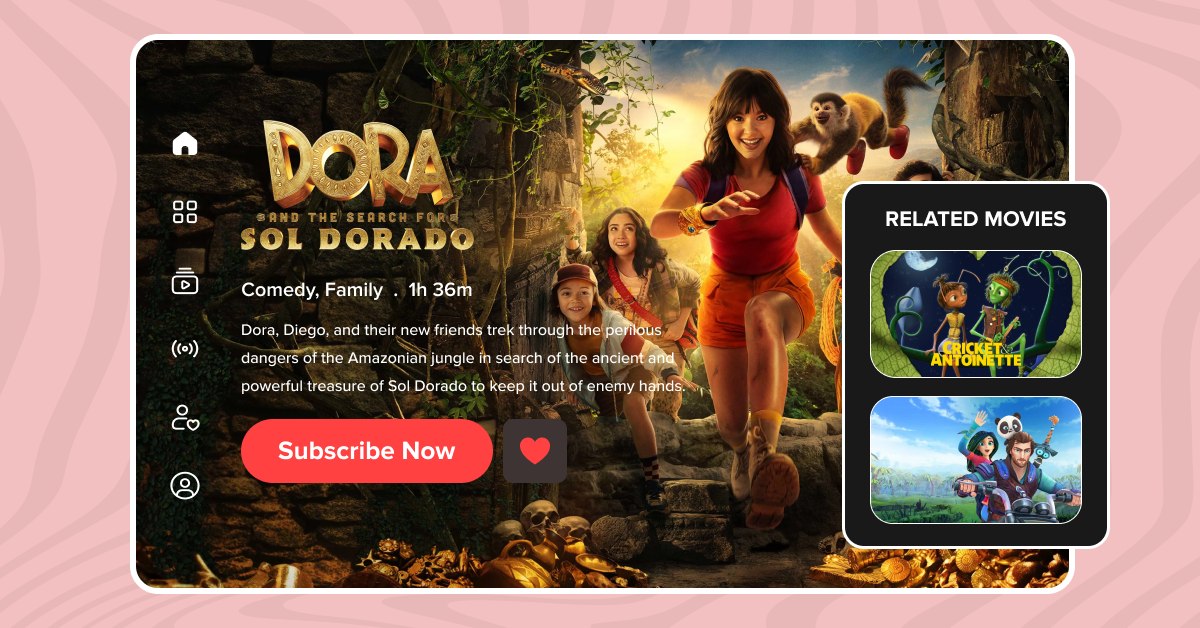
VOD or Video on Demand refers to a type of content (on demand) that users can access at their convenience. Unlike traditional broadcasting schedules, users can access video on demand whenever they want.
Users can stream or download video content like movies, series, TV shows, and documentaries with the help of the Internet.
Traditional broadcasting requires you to tune in to the TV at 11 pm to catch your favorite movie. On the other hand, you can stream the same movie on demand at your convenience, bestowing utmost independence in consuming content.
How Does VOD Work?
Not every video you watch online is a video on demand. There’s a specific way VOD systems operate; let us explain below.
Let us assume you’re a content creator reading this blog. You may already have video assets available, created either originally or licensed from third-party providers. This is how the process works:
- You upload videos to a VOD platform, where transcoding happens, and the videos are saved on servers.
- Then, when the user clicks play, the built-in Video player initiates a server request within a few seconds.
- Unlike traditional broadcasting, users can play, pause, or jump to a specific part of the video on demand.
Simply put, VOD platforms put the users in complete control over their viewing preferences..
Pros Of VOD
VOD sounds great in concept, doesn’t it? But what makes VOD worth the hype? The answer lies in five key advantages that give a competitive edge over traditional broadcasting.
➡️ Convenience
The first in the list has to be convenience, right? VOD eliminates the need to worry about broadcast schedules or recording devices (DVRs).
Busy folks can enjoy their favorite shows or highlights of the missed live sporting events on their own terms, at their own pace.
➡️ Content Choices
VOD is not just about a single genre; it caters to almost everyone: from sitcom enthusiasts to adventure lovers, and fitness enthusiasts to faith-based communities.
Whether you are a content creator or an aspiring business owner, employing a viable VOD platform helps you present diverse content choices to amass a global audience.
➡️ Global Accessibility
Video on demand has truly globalized the video content market, eliminating geographic barriers. Someone from New York can binge-watch manga anime series as someone in Tokyo, at the same time.
VOD has democratized video content beyond geographic barriers, which is huge, especially if you are a content creator. You can potentially reach a global audience with a scalable VOD platform.
➡️ Data-Driven Personalization
Remember flipping through TV channels to find your ideal TV show or movie? VOD platforms never want you to do that. Instead, they monitor viewing patterns, search terms, and watch time to curate personalized content.
For content creators, this data-driven personalization is invaluable. You needn’t invest in any third-party analytics, since VOD platforms do that for you.
➡️ Cost-effectiveness
Traditional cable required a lot of infrastructure such as cables, towers, and signal processors. As a result, the cable fees were always volatile due to unforeseen reasons.
On the other hand, all users need is an internet connection to access videos on demand. This kept the cost in check, eliminating the sudden spikes and any form of hidden charges.
This means a world of good for a lot of people, especially content creators. There is no need to invest in any infrastructure. Create content, upload to a VOD platform, and reach a global audience.
Cons of VOD
Every smart decision requires you to consider both sides of a coin. Let us break down some challenges that come with VOD adoption.
➡️ Content Discoverability
Exhibiting your video content on VOD platforms poses several challenges. Your content could sit idle if the platform’s algorithm doesn’t favor your content.
You have to consider the algorithm while creating your content and uploading to a VOD platform.
➡️ Limited Content Choices
We contradict ourselves here! While content choices are aplenty, why do you say there is a ‘limitation’?
Here’s the catch: while you may think you’re getting diverse content (different genres), the truth is that you can access the video content only what the VOD platform holds license to.
Understanding VOD Monetization Options
Are you convinced that VOD is the way forward? Now comes the all-important question: how do you make money from VOD? Let’s break down the primary monetization models empowering the VOD revolution:
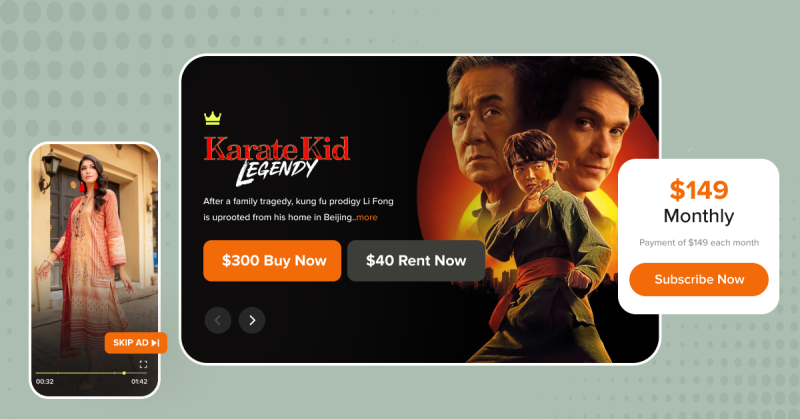
- Subscriptions (SVOD)
Users pay a recurring fee (monthly, quarterly, or annually) to access a VOD library. For content creators, this presents a recurring revenue stream as long as they produce content that receives money.
- Advertisements (AVOD)
Users can access ad-infused content at no cost. Most often, these ads are user-focused and generated based on the user behavior (online) and viewing patterns.
- Transactional (TVOD)
Users can rent or purchase video content on an ad-hoc basis. This model follows a flexible approach: users can pay for the content they find valuable without any long-term commitment.
What Is OTT?
OTT, or over-the-top, is another technology to deliver content over the Internet. However, unlike VOD, OTT delivers live content instead of pre-recorded sessions or videos.
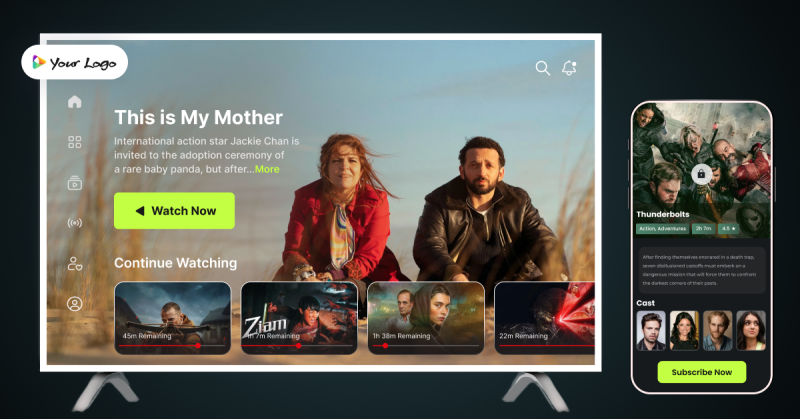
How Does OTT Work?
OTT, as the name suggests, delivers content over the internet, eliminating the need for any middlemen.
Let us assume you are a broadcaster or someone who is operating in the streaming service ecosystem.
Start by uploading your videos to an OTT platform.
Video content travels across servers through a content delivery network (CDN), which delivers content quickly.
When a user tries to access your video content, the nearest server sends the video data to the receiving device in real time.
Pros Of OTT
OTT theory sounds interesting, right? But what keeps OTT in the buzz? Let us break down the advantages that OTT theory brings to the table.
➡️ Cord-Cutting Appeal
The advent of the OTT concept gave consumers a chance to ditch cable television. In fact, 80.7 million U.S. households will be transitioning from cable to OTT streaming services by 2026. (Source: Statista)
Consumers were suffering from rigid cable contracts and overpriced plans before OTT players came into existence.
➡️Multi-Device Access
OTT platforms can stream content on any device, presenting a great degree of freedom for the users. Start watching a movie on your smart TV, continue on your smartphone, and pick where you left off at the office, if possible:)
Isn’t that a great deal of flexibility?
➡️ Direct Engagement
Cultivate direct engagement with your target audience, eliminating the need for any intermediate platform. This works well for niche OTT platforms, whose primary objective is to nurture a sense of belonging among the community.
Cons of OTT
Just like VOD, OTT is also not an exception to having downsides. Let’s count some of them here:
➡️ Poor Network Affects Streaming
OTT video streaming relies heavily on the internet bandwidth. If the internet connection is unstable, the streaming experience will be impacted.
➡️ Security Concerns
OTT platforms are in a constant battle against unauthorized streaming, content piracy, and malicious attacks. User information, payment information, and licensed content are all at potential security risks.
What’s the Difference: VOD vs OTT
The crux is simple: Video On Demand (VOD) refers to the content format, while Over-the-Top (OTT) refers to the delivery method.
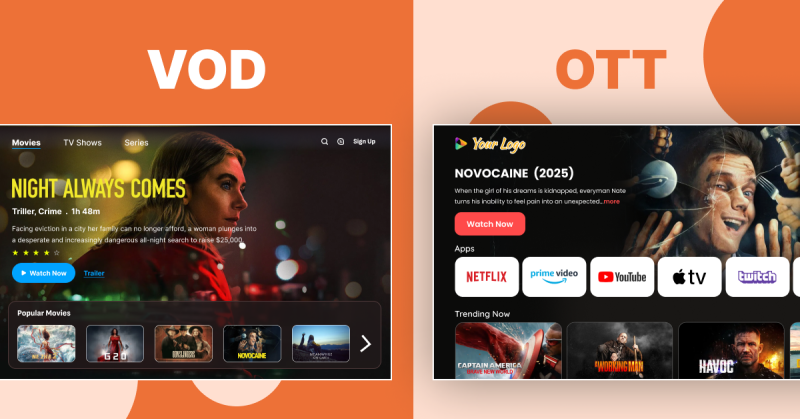
| OTT | VOD | |
| Meaning | Any content that is transmitted using the Internet falls under OTT | Content that is pre-recorded and can be played anytime using the Internet, cable, or satellite is VOD |
| Playback | OTT broadcasts live events that can’t be played later in time | Since videos are pre-recorded and not live, one can play them anytime |
| Content Variety | Offers live streaming such as sports matches, concerts, Skype | Offers movies, web series, TV shows, documentaries, etc. |
| Security | OTT platforms might raise security issues | VOD platforms provide high security for every device |
| Streaming Options | With OTT, users can only stream videos | VOD platforms allow users to stream both audio and video |
| Examples | Amazon Prime, Netflix, YouTube | |
Both terms can be theoretically similar, but practically not. Here are some examples:
A movie or show you choose to watch on a long-haul Lufthansa flight’s In-flight entertainment system is VOD, but not OTT (because it is delivered through local storage, not streamed online)
A Netflix original you choose to watch is both VOD and OTT (the video on-demand content is delivered over the internet).
A live sporting event on the DAZN app is OTT but not VOD (you watch the game in real-time).
Conclusion
Throughout this blog, we’ve explored the key distinctions between OTT and VOD, from their delivery methods and content accessibility to their monetization models and target audiences.
While both deliver video content over the internet, understanding the fundamental differences between VOD and OTT will help you determine what works best for your business.
Whether you’re a content creator choosing distribution methods or an aspiring entrepreneur looking to enter the market, we hope this blog helps you choose the right platform for your needs.
VOD Vs OTT FAQ’s
Is VOD a type of OTT?
VOD refers to providing access to pre-recorded content, whereas OTT also offers live broadcasting of content such as live streaming.
What Are The Business Benefits Of Launching A VOD Streaming?
Businesses can build and grow their online presence by providing their audience with content to stream. You can collect their audience data from a streaming platform, create their online community, monetize their content, and improve their marketing strategy.
How to start a Successful VOD Streaming channel?
For successful video streaming, you can sign up for a Creator Account and customize different elements accordingly. Upload your logo, description, and introduction video, and start hosting videos on your channel.
What is the best way to generate revenue from the VOD platform?
VOD platforms offer various revenue streams based on subscriptions, advertisements, rentals, etc. You can choose any of these or more than one of these revenue options to generate income.
Which is more profitable? VOD or OTT?
If you are primarily interested in providing pre-recorded content such as movies, web series, and videos, you should consider VOD. However, you should consider OTT if you can offer your viewers real-time content or live streams.

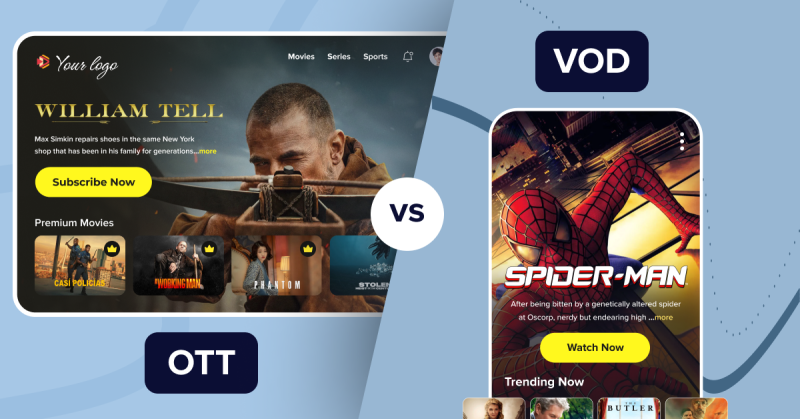
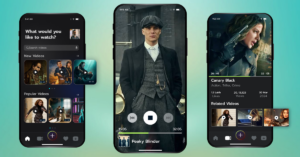
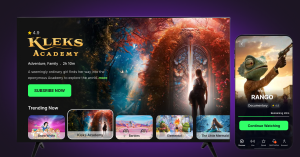

It’s an insightful article with the current trends of VOD & OTT and helps for many creators to choose the right streaming service. Thanks
First of all thanks for the informative blog. I’m an independent short film creator. Which one is best for me to increase my video business revenue, VOD platform or OTT Streaming platform. Please help me to make my video journey successful.
Obviously the Video on Demand is more popular and profitable, example YouTube. Thanks for the great comparison between VOD & OTT. Now I have a clear idea to choose streaming platform to run my Video business.
This blog is an insightful knowledge base for understanding the debate between VOD and OTT. The way it breaks down the technical aspects and the user experience is enlightening.
It’s a fascinating to see how OTT and VOD are shaping the future of content consumption, and it’s clear that they have their own unique advantages. Thanks for sharing the best comparison aspects between OTT vs VOD.
The distinctions about VOD vs OTT can sometimes be a bit blurry, but this blog `does an excellent job of clarifying them. It’s amazing how technology continues to expand our options in the world of digital entertainment.
VOD and OTT are two terms I’ve often heard but didn’t completely understand. This blog clarifies their differences brilliantly. Special thanks to the writer.
I have plan to launch my very own VOD platform. Where can I begin. Can any one help to build Video on demand platform?